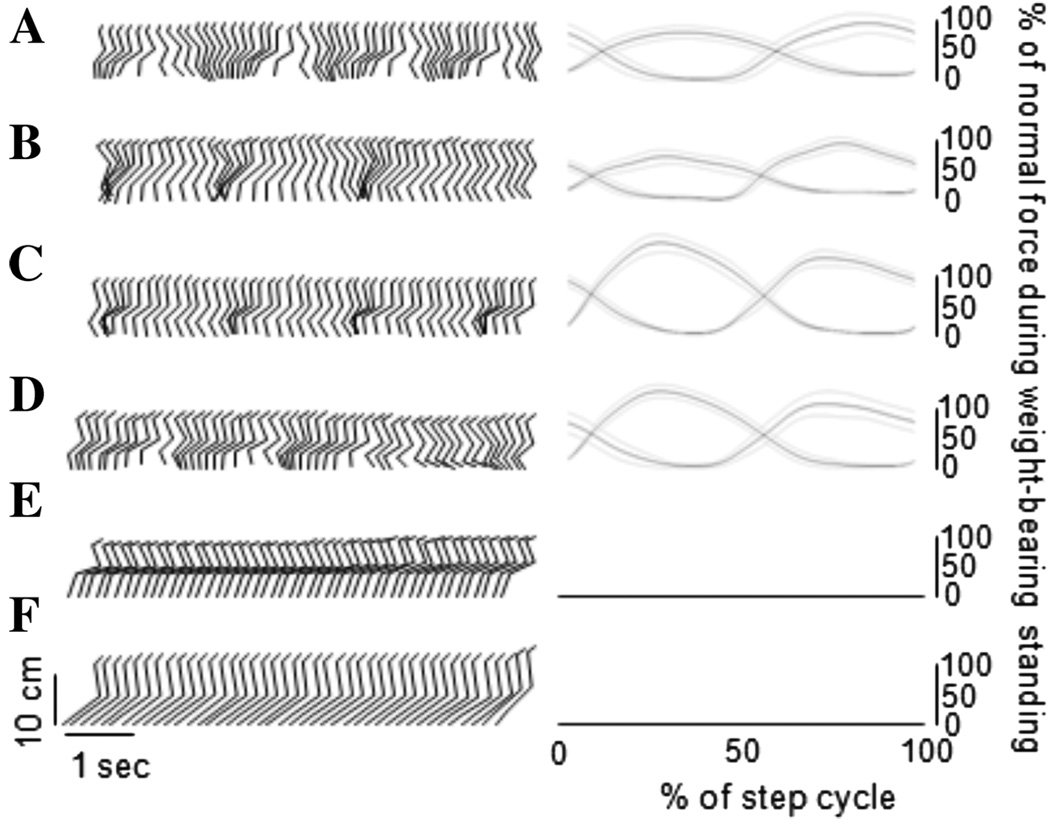Figure 1.
Stick-figure representation of the effect of various deafferentations on hindlimb walking movements in the completely spinalized cat. (A) No deafferentation, (B) S1 rhizotomy, (C) L6 rhizotomy, (D) L4 rhizotomy, (E) L3/4 rhizotomy, and (F) L5-S1 rhizotomy. To the right of the stick figures are the GRFs averaged over a step cycle and normalized to the full load taken by the hindlimb during full weight-bearing standing. The upper four plots are qualitatively similar indicating a lack of major effect of the deafferentation on the evoked stepping pattern. The L3/4 and L5-S1 rhizotomies abolished spontaneous stepping activity of the hindlimbs as evidenced by the lack of modulation of joint angles in the stick-figures and the flat GRF traces.

